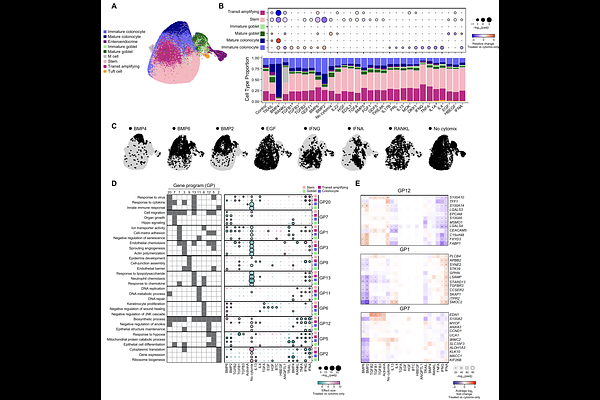Dictionary of human intestinal organoid responses to secreted niche factors at single cell resolution

Dictionary of human intestinal organoid responses to secreted niche factors at single cell resolution
Capeling, M.; Chen, B.; Aliar, K.; Penna, E.; Lopez, V. I.; Foo, C.; Rost, S.; Holokai, L.; Tong, X.; Philipps, D.; Sweet, C.; Li, J.; Chatterjee, S.; Skippington, E.; Modrusan, Z.; McGinnis, L. M.; Wei, R.; Keir, M.; Rozenblatt-Rosen, O.; Chen, M. B.
AbstractThe intestinal epithelium is often a site of pathology, such as in inflammatory bowel disease (IBD), and its maintenance is highly modulated by interactions with the microenvironment. However, a systematic understanding of how the myriad of niche cues impact distinct epithelial cell types in a diseased context is still lacking. To address this gap, we first benchmarked diverse human colonic organoid injury models against IBD tissue, and established a disease-relevant model of epithelial inflammation using TNF[a], IFN{gamma}, and IL1{beta}. Using this system, we built a dictionary of epithelial responses to 81 secreted niche factors at single cell resolution via donor-pooled, multiplexed single cell RNA-sequencing (scRNA-seq). The comprehensive nature of our atlas allowed us to map relationships between perturbations, infer the function of less well-characterized ligands, and identify cell type-specific perturbed pathways. Finally, we established the relevance of organoid-derived gene programs by mapping them to single cell and spatial atlases of human IBD tissue. Our resource offers a global view of epithelial responses to microenvironmental cues in a physiologically relevant disease context and generates new hypotheses for signaling factors that may be involved in epithelial homeostasis and repair.